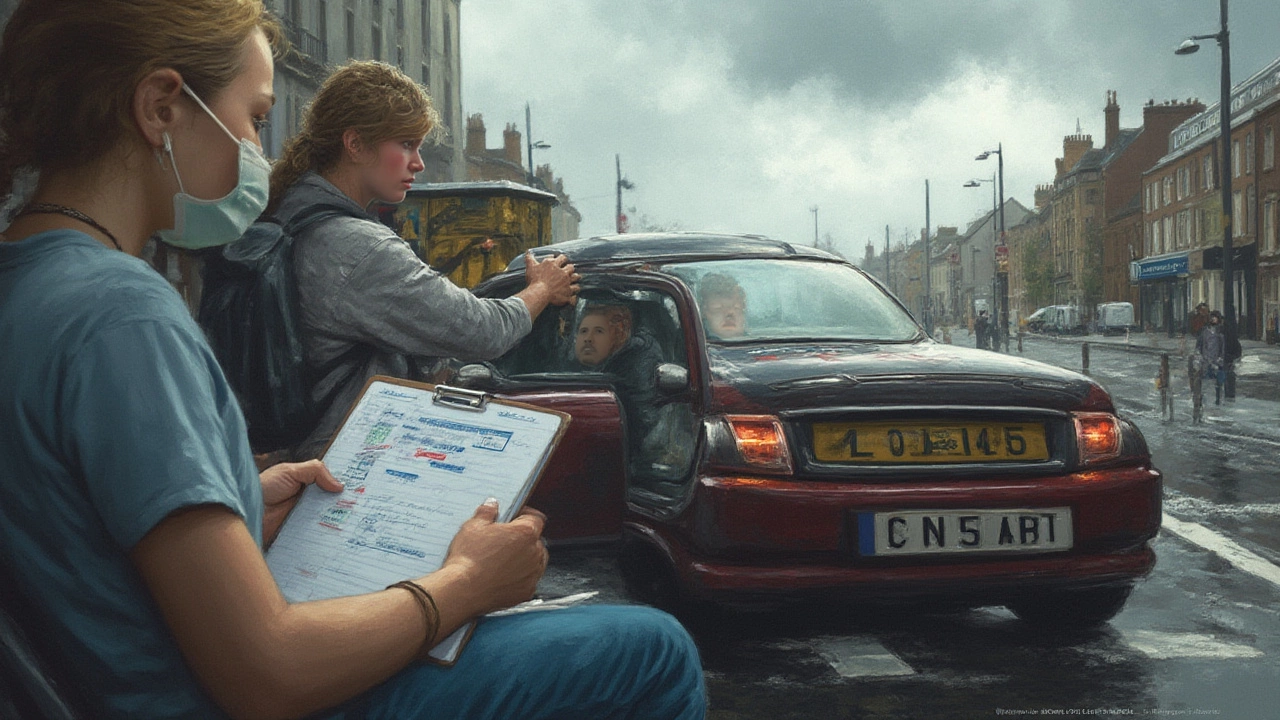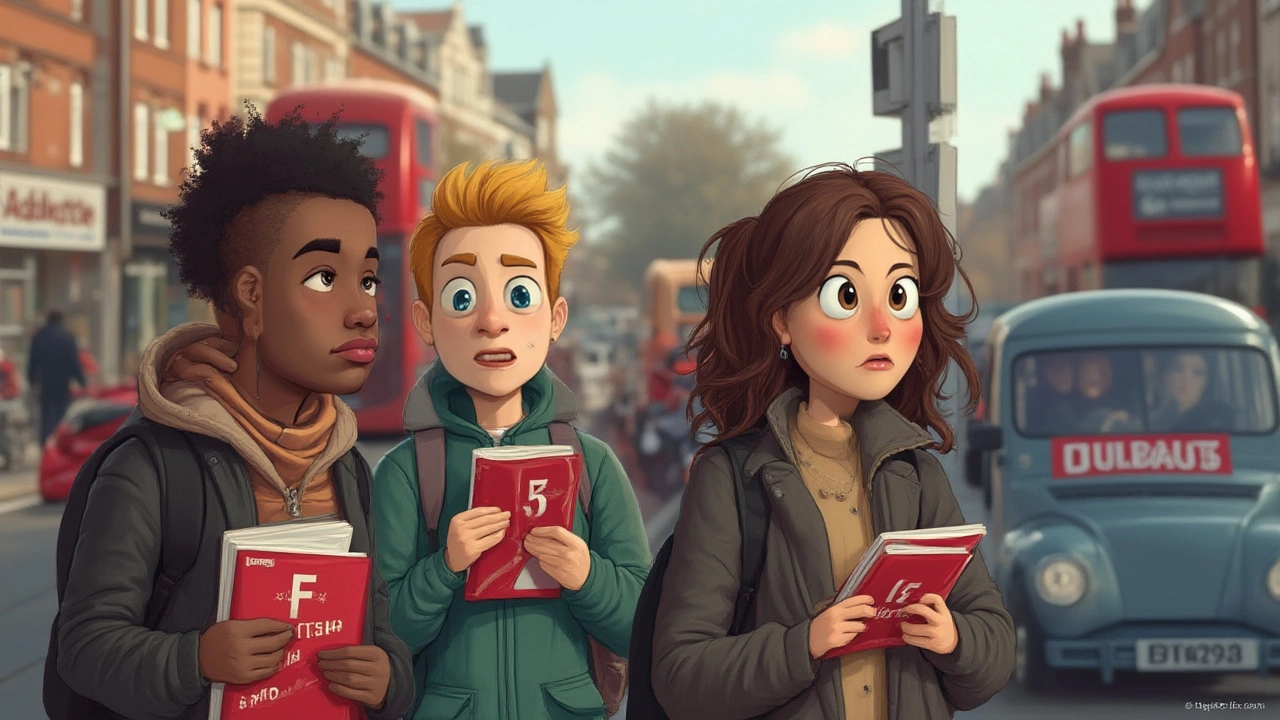Failing a driving test feels like the world’s harshest reality check. You nail every difficult turn in practice, triple-check your mirrors, and recite the road code by heart—then suddenly, you’re back to square one just because of a split-second mistake. Few things hit the ego quite like hearing, “Sorry, you didn’t pass today.” If you’re prepping for the big day, you need straight facts: just how many major mistakes can you get away with before they fail you?
Understanding the Grading System: Major vs Minor Mistakes
The driving test in New Zealand (and in most places like the UK and Australia) sorts mistakes into two main categories: major and minor. Minor mistakes—sometimes called ‘driving faults’—are things like missing a mirror check or stalling the car if you recover quickly. Major mistakes, however, are a different beast. They’re outright dangerous errors—think running a red light, unsafe lane changes, or missing a stop sign. You might hear these called ‘critical errors’ or ‘serious faults’ on some test reports.
Let’s put this in perspective. The New Zealand practical test is usually marked by a testing officer seated next to you, with a clipboard and nerves of steel. Every action you make gets watched, and the officer thinks: Would this action, repeated on public roads, risk harm to you or others? That’s the line in the sand for a driving test ‘major mistake’. For minor mistakes, you might get away with a handful—usually up to nine or ten before things get dicey. But with major mistakes, there’s almost no wiggle room.
Here’s a useful table summarising the types of faults and what they mean for your result:
| Fault Type | Description | How Many Allowed? |
|---|---|---|
| Minor Fault (driving fault) | Errors that aren't dangerous—e.g., skipping a mirror check, hesitating at an intersection | Up to 9 (sometimes 10) |
| Serious Fault (major mistake) | Potentially dangerous mistakes—e.g., not giving way, improper lane change, poor observation before turns | 0 (usually results in failure) |
| Critical Error (immediate fail) | Very dangerous mistake—e.g., running a red, causing near miss, mounting a curb | 0 (instant fail, test can't continue) |
Major mistakes don’t just knock points off. Most commonly, a single major mistake can mean instant failure. Testing officers have a duty of care—you can’t pass if you’ve shown you might cause an accident or break a basic road rule.
Types of Major Mistakes and What They Look Like
So, what counts as a “major” or “serious” fault? Definitions can shift a tad between regions, but in New Zealand, these usually fall into two baskets: not following the law and creating danger. Here’s the real deal:
- Failing to give way at intersections: If someone else has right of way and you go anyway—major.
- Missing a stop sign or running a red: There’s no leniency here. Even if the road is empty, it’s a fail.
- Improper observation—especially at crossings and roundabouts: If you forget to check for pedestrians or bikes, that’s a big red flag.
- Unsafe lane changes: Skipping blind spot checks or cutting someone off turns a simple manoeuvre into a serious mistake.
- Excessive speed—either over the limit or too slow in flowing traffic: Both can count. If you’re causing danger by holding everyone up, it’s as problematic as speeding.
- Mounting the kerb or clipping an obstacle: These show a lack of essential car control.
- Serious stalling, particularly at dangerous moments like intersections. A little clutch fumble on a hill is fine, but causing other drivers to brake for you? Not so much.
What makes these major mistakes is that they challenge the basics of safe driving. The law is strict because the stakes are high. For example, running a red light, even by accident, is never excused. That could get someone hurt. Testing officers note evidence and sometimes explain at the end: “If you had done this in real life, we’d have had a problem.” You can cruise through the other 99% of your drive with perfect gear changes and textbook parking, but a single major mistake can send you home with a rebooking slip.

How Many Major Mistakes Can You Make Before Failing?
This is the burning question, right? The straight answer: You can’t make any major (serious) mistakes if you want to pass. In most places in New Zealand, one major slip-up is all it takes for an automatic fail. There’s a lot of confusion around this, and part of it is because driving exam rules sometimes change or get described a bit blurry online. But as of now, the official test standards are strict: make a single major mistake and you don’t pass—plain and simple.
There are rare scenarios where a “serious fault” might be marked that doesn’t actually stop the test cold. These are moments when the officer sees your mistake as serious, you’re allowed to keep driving, but it’s still noted as an instant fail the moment the test wraps up. There’s no getting away with two or three major errors and scraping through on charm.
Local driving schools often hear students ask, “But what if I just made a small major? Does that count?” The unfortunate truth is yes—there is just one category for major/critical mistakes, so there’s no grading on a curve or ‘barely failed’. It’s either safe, legal, and consistent—or not. Some instructors will tell you stories of learners who were close to perfect except for a single serious oversight. It can sting, but it’s also what keeps standards so high.
To avoid falling into this trap, the best advice is: Don’t just aim for “almost perfect”—train your habits so the major mistakes feel impossible because your brain and body always default to safe, legal driving. Practise those nail-biting moments—busy intersections, tricky merge lanes, right-hand turns against heavy traffic—until they feel like second nature.
Practical Tips to Avoid Major Mistakes on Test Day
If there’s one thing that sinks more tests than anything else, it’s nerves. You might know every rule and still get shaky when the clipboard comes out. So how do you bulletproof yourself?
- Mock tests matter: Book a couple of sessions with a qualified instructor, preferably one who knows your local testing routes. Ask for brutal honesty—tell them not to let anything slide.
- Ask for feedback after lessons: A lot of learners never ask, “Would you let me pass if I went for my test today?” It’s a simple question, but it gets right to the point.
- Rehearse the spots where people trip up most: Intersections in Wellington, for example, can get tricky with hills and fast-approaching traffic on tight bends. Know these choke points and practise them until you stop second-guessing yourself.
- Give yourself time on test day: Don’t roll up stressed or rushed. Arrive early, walk off the jitters, and get in the right headspace. A good night’s sleep is worth more than cramming an extra hour of YouTube parking videos.
- Talk to someone who recently passed: Not every instructor is up-to-date with how test routes work right now. Chatting with a mate who passed a month ago usually means you’ll get some inside scoop about the testing officer’s little habits or which roundabout they love to use for stress-testing new drivers.
- Remember the structure of the test: In NZ, your test is scored in phases—starting, driving in traffic, complex manoeuvres, and parking. Know that you can rack up a few minor faults and still pass, but if you’re told at any stage you’ve made a major error, expect an honest verdict at the end.
Don’t forget: “Practice makes permanent, not perfect.” The best drivers on test day aren’t the ones who nail every quirky question on the theory test. They’re the ones who react calmly when something unexpected happens on the road—they check, they pause, and they think safety first, no matter how rushed or nervous they feel.
Failing a driving test stings, but it doesn’t define your future. It just means there’s one moment, one skill, that needs tightening up. But with clear eyes about how the system works and a healthy respect for what’s “major,” you’re already halfway to a pass slip printed with your name.

